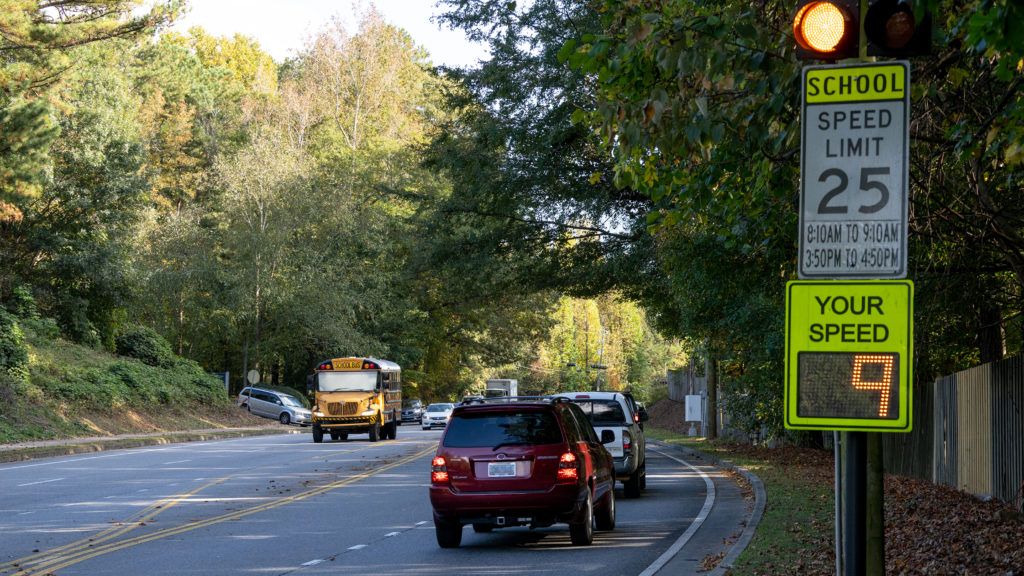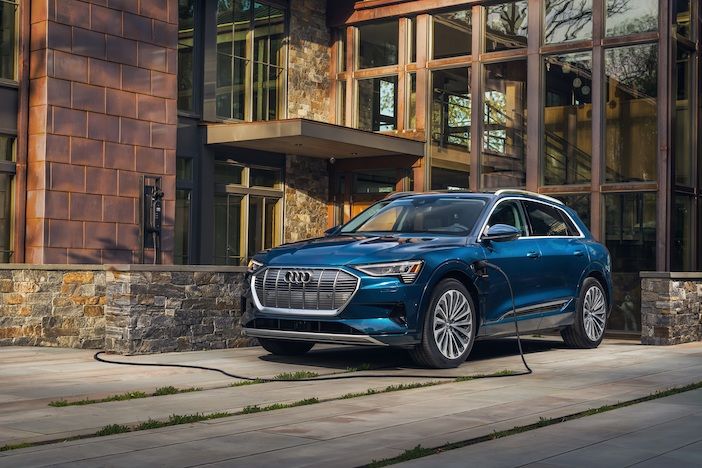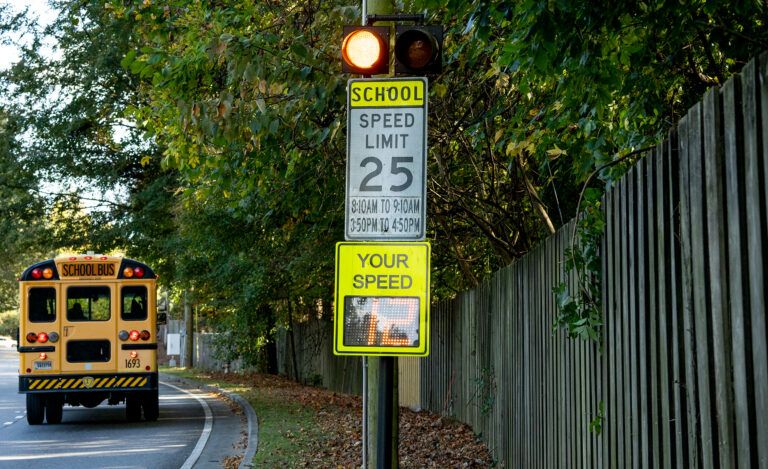Audi of America, Applied Information, and Temple, have announced a collaboration to develop two future connected vehicle applications that can help improve safety in school zones and around school buses when children are present.
The first application, using cellular vehicle-to-everything (C-V2X) technology, is designed to warn drivers when they are approaching an active school safety zone and exceeding the speed limit when children are present. The second application is designed to warn drivers when they are approaching a school bus stopped to pick up or drop off students. The project is expected to be completed in the first half of 2021.
When active, roadside units (RSU) installed in school zone safety beacons — flashing signs that are intended to slow drivers down as they pass by a school — will broadcast messages to vehicles indicating location of the school and the reduced speed limit. This initial deployment will also help alert drivers to the changes in speed limit as school times change due to circumstances, such as half school days and early dismissals for weather.
In the second deployment application, onboard units (OBU) will broadcast C-V2X safety messages from school buses to C-V2X-equipped vehicles when the bus stop arm is extended to indicate no passing is allowed.
Modified Audi e-tron test vehicles will implement C-V2X capabilities that Audi hopes to bring to consumers in future vehicle generations. The technologies are similar to those announced last month with partners in a collaboration with the Virginia Department of Transportation to help protect vulnerable roadside construction workers. Applied Information plans to supply the school bus OBU and school beacon RSUs, which Temple will deploy.

According to the latest data from the National Highway Traffic Safety Administration, 2018 saw nearly 6,300 pedestrian fatalities[1] in the U.S. — the highest rate since 1990. Additional data shows on average more than 100 children killed and approximately 25,000 injured each year walking to or from school[2].
A number of studies[3] have also reported that stop-arm violations continue to be one of the greatest dangers to school children; that is, a driver speeding up or failing to stop when a school bus is flashing its yellow or red signal lights and its stop sign.
“Using next-generation cellular technology, we have an opportunity to help save lives of some of the most vulnerable road users — school children,” says Pom Malhotra, director, Connected Services, Audi of America. “We’re proud to work with Applied Information and Temple to help make our roads safer. Around the country, Audi continues to take a leading role, working with partners in communities to show how C-V2X and the 5.9 GHz band can help reduce traffic hazards and improve congestion management when these technologies become ubiquitous.”
The applications will be developed at the Infrastructure Automotive Technology Laboratory (iATL) in Alpharetta, Georgia. The iATL was established to encourage automakers to test connected vehicle technology in a true streetscape setting featuring real-world interferences and obstructions. The iATL is licensed to operate fixed and mobile C-V2X (PC5) communications technology in a 75-square-mile area around the laboratory.

“Improving safety in school zones and at bus stops is a top priority of our connected vehicle development program,” says Bryan Mulligan, president of Applied Information and executive director of the iATL. “We are pleased to be working with Audi and Temple to help bring this advance in safety technology to the community.”
Alpharetta is also a prime location to test vehicle-to-infrastructure technologies, as it is home to 125 connected traffic signals — almost every signal in the city. Of those, 55 are capable of direct C-V2X communication between a vehicle and a signal using short-distance cellular communication. The signals help optimize green light timing and traffic flow as well as Traffic Light Information equipped in many Audi vehicles currently on sale.
“Alpharetta is a city where innovation thrives and our connected vehicle partnership is a prime example,” says@AppInfoInc Alpharetta Mayor Jim Gilvin. “Using technology to improve roadway safety during the school year is yet another illustration of the creativity of our community and partners.”





